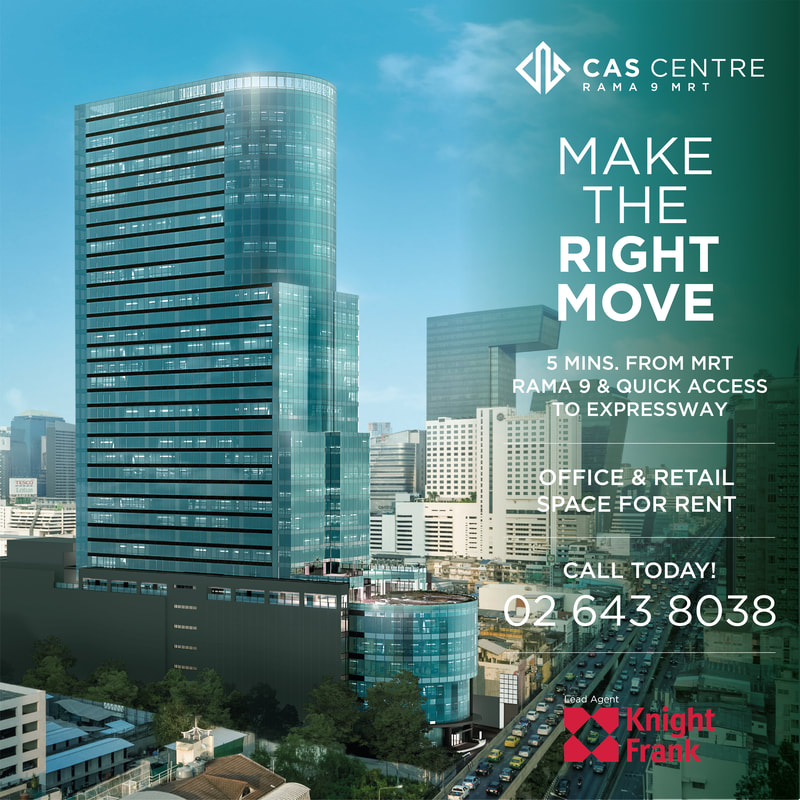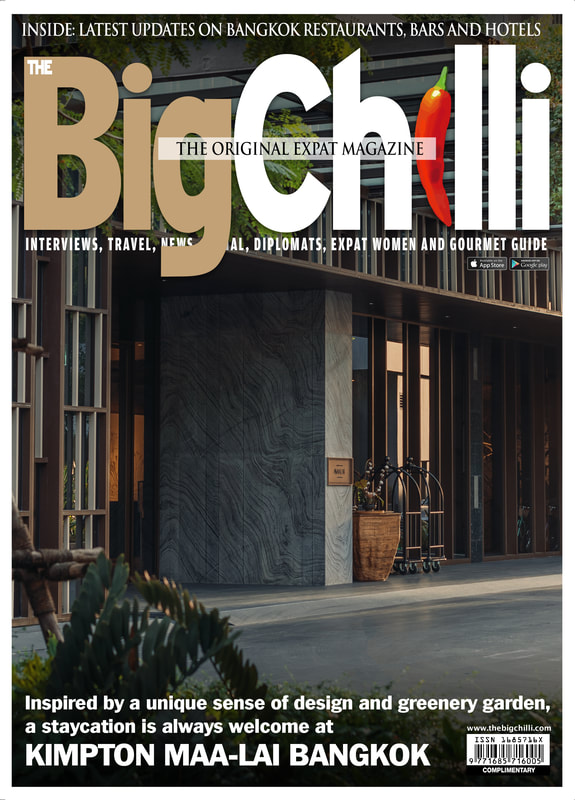Ambassador aims to build a clearer image for his historically rich nation
By Maxmilian Wechsler
By Maxmilian Wechsler
| WHEN 20 Thais and expatriates contacted before this interview with the H.E. Vladimír Halgaš, Slovak ambassador to Thailand, were asked to pinpoint the location of the Slovak Republic, only five answered correctly, and none could give any information on the country, writes Maxmilian Wechsler. Many confused it with Slovenia, which split from the former Yugoslavia in 1991and also became an independent nation. The Slovak ambassador gladly accepted a request for an interview in the hope that it would lead to a better understanding of his young country, which nevertheless has a long and proud history. Since taking his post in September 2011, Mr Halgaš has gained a good reputation and the respect of members of the Bangkok diplomatic corps and the Thai Ministry of Foreign Affairs (MFA) for his professionalism and sustained efforts to propel Slovak-Thai relations in all spheres. |
Mr Halgaš was born in 1955 in Banská Bystrica, a city in the middle of Slovakia, which was at the time a part of Czechoslovakia (now the Czech Republic and Slovak Republic), which in turn was part of the Soviet bloc before the dissolution of the Soviet Union. Banská Bystrica lies on the edge of the Low Tatra Mountains, an area where downhill skiing is very popular. “We have snow there usually from November until March or even April,” the ambassador said during this meeting at the Slovak embassy located on South Sathorn Road.
After high school, he left in 1974 for Moscow, where he graduated from the Institute of International Relations, Faculty of International Law in 1979.
The same year Mr Halgaš joined the MFA in Prague, capital of Czechoslovakia, and held a number of positions there and abroad.
“I spent almost 10 years in Prague working as the ‘desk man’ at the MFA, responsible for the United States. In 1988 I was suddenly sent to the North Korean capital Pyongyang, where I started as the 3rd secretary of the Czechoslovak embassy and was promoted up to the deputy head of the mission. At that time it was a pretty large embassy with about 20 Czechoslovak officials working there because we were very active in economic cooperation.
“Why was I sent to North Korea? Maybe because someone thought I spent too much time then with ‘our enemy’ at the American desk and it was necessary to re-educate me.
“After four years in Pyongyang I returned to Prague in December 1992, only two days before the split of the Czechoslovak federation. On January 1, 1993, when Czechoslovakia split into the Czech Republic and Slovak Republic, I joined the Slovak foreign service and moved from Prague to Bratislava, the capital of Slovakia.
“My first assignment was as director of the department dealing with the United States, the European Union and NATO countries. In 1996, I became head of the Slovak embassy in Helsinki, Finland.
“After returning to Bratislava in 1999, I was assigned as the director of a department covering neighboring countries, including Germany and all Scandinavian and Baltic states, until 2002. In that year, I got my first ambassadorial position in Dublin, Ireland.
“When I came back to Slovakia in 2004, I became ambassador at large, with responsibility for the Slovak presidency in the Central European Initiative. Then from 2005 to 2008 I was advisor to the section for International Economic Organization.
“After two more high-level positions at the MFA, I was appointed in 2010 as director of department for Asia, Africa and Latin America, and later appointed as Slovak ambassador to Thailand, arriving here on September 15, 2011.
“The first time I came to Thailand was in 1995, at a time when we were making some changes at our embassies in the region. Between then and September last year Thailand had changed dramatically. I was really surprised with its development.
“I also cover three other countries in the region: Cambodia, Laos and Myanmar. To look after four countries is not an easy task because our level of cooperation in these countries varies as they are at different stages of development, despite the fact that they are all ASEAN member-countries and have a lot of similarities. It is necessary for me to select the most appropriate activities for our cooperation because it is not possible to do everything.
“For example, Slovak NGOs are involved in a humanitarian project in Cambodia taking care of HIV positive children. Recently I signed an agreement giving them a small grant as we are trying to help the NGOs so they can provide care for the children at the highest possible level.
“We are also making preparations for the Asia-Europe Meeting (ASEM) in Laos in November. We have to communicate with our Laotian colleagues to prepare the way for our delegation led by the Slovak Prime Minister and organize bilateral meetings between the prime ministers and Laotian officials. Naturally, I will be there as well.
“My position is a little different from most of my colleague ambassadors because Slovakia is a relatively new country and practically unknown, despite the fact that we are located in the middle of Europe and in reality a very old nation.
“We were known for many centuries as north Hungarians. Then we became Czechs because it was a good abbreviation for Czechoslovakia, but only a few people realized that behind this name were two peoples – Czechs and Slovaks. So, when we became independent, we became for the first time in charge of our own state. So, the first goal is to make people aware that Slovakia exists and we are ready to build good relations and to cooperate with other countries.
“At first we [Slovak Republic] were concentrating mostly on Europe because they are our neighbors and we were oriented on Europe because we were eager to join NATO and gain EU membership, which we accomplished in 2004. After that, step by step we started to build relations with other countries in other continents. That’s why I am here and that’s why our people are now very active in Asia. My first goal is to make people in Thailand aware of Slovakia. But when I say that most people here know nothing about Slovakia, this doesn’t apply to officials at the Thai MFA, who know quite a lot about my country,’’ Mr Halgaš added.
Diplomatic relations and cooperation
Diplomatic relations between Thailand and Slovakia were established at the beginning of the existence of the Slovak Republic on January 1, 1993.
“Thailand recognized the Slovak Republic on this day, when we also opened our embassy in Bangkok,” said Mr Halgaš. “At that time we were based at the former Czechoslovak embassy. The Czech Republic moved to a new location. Unfortunately, until now, we don’t have a Thai embassy in Bratislava. They are covering us from the Thai embassy in Vienna, Austria.
“I have already written several articles for English newspapers here, and I took part in a one-hour program on a Thai satellite TV channel about Slovakia. So I am doing my best to spread the word about Slovakia. We are ready to cooperate and there are many fields for that between our two countries.
“There has already been, for example, cooperation between the Slovak University of Agriculture in Nitra and Kasetsart University in Bangkok. There are regular meetings between students and professors at Nitra and their counterparts at Kasetsart.
“Like Thailand, Slovakia is a big producer of motor vehicles. We are producing about 130 cars per capita – Volkswagen, Peugeot, Citroën and KIA sedans. It is another area for cooperation, to exchange expertise and so on.
“There are a lot of possibilities, but one problem is that at this time we don’t have an economic diplomat in our embassy. The good news is that next year one such official will come to take responsibility for finding possibilities for economic cooperation and to implement such efforts.
“The business ties between our two countries aren’t yet very rewarding and mutually benefitting. That’s why we are doing our best to initiate high-level visits on both sides. I hope that next year, after the economic expert arrives at our embassy, the economic ties will start to grow,” the ambassador said.
“At this moment trade between our countries amounts to about US$170 million. As for products traded, it is electronics going both ways; there are some pharmaceutical products coming here from Slovakia, fruits from Thailand to Slovakia, machinery going both ways and glass products from Slovakia to here.
“We have a Thai company in Slovakia called Delta Electronics (Slovakia) producing electronic equipment. The company also has factories in Thailand and India, as well as its state-of-the-art R&D facilities in Germany,” Mr. Halgaš said.
Cooperation in flood prevention
“When I came here a year ago, there was enormous flooding in Thailand. In Slovakia long ago we faced the same situation almost every year with flooding from the Danube River. That’s why we built up the Gabcˇíkovo Dam, which is about 20 kilometers long. Since that time we have had no floods on the Danube. The dam produces electricity and doesn’t create any problems for the environment. We think we can share our experiences with Thailand for mutual benefit.
“In fact, in September 2011, a delegation comprised of officials from Thailand’s Ministry of National Resource and Environment visited the dam. They were eager to learn of our experiences, how the dam is functioning, how effective it is in flood prevention.”
After high school, he left in 1974 for Moscow, where he graduated from the Institute of International Relations, Faculty of International Law in 1979.
The same year Mr Halgaš joined the MFA in Prague, capital of Czechoslovakia, and held a number of positions there and abroad.
“I spent almost 10 years in Prague working as the ‘desk man’ at the MFA, responsible for the United States. In 1988 I was suddenly sent to the North Korean capital Pyongyang, where I started as the 3rd secretary of the Czechoslovak embassy and was promoted up to the deputy head of the mission. At that time it was a pretty large embassy with about 20 Czechoslovak officials working there because we were very active in economic cooperation.
“Why was I sent to North Korea? Maybe because someone thought I spent too much time then with ‘our enemy’ at the American desk and it was necessary to re-educate me.
“After four years in Pyongyang I returned to Prague in December 1992, only two days before the split of the Czechoslovak federation. On January 1, 1993, when Czechoslovakia split into the Czech Republic and Slovak Republic, I joined the Slovak foreign service and moved from Prague to Bratislava, the capital of Slovakia.
“My first assignment was as director of the department dealing with the United States, the European Union and NATO countries. In 1996, I became head of the Slovak embassy in Helsinki, Finland.
“After returning to Bratislava in 1999, I was assigned as the director of a department covering neighboring countries, including Germany and all Scandinavian and Baltic states, until 2002. In that year, I got my first ambassadorial position in Dublin, Ireland.
“When I came back to Slovakia in 2004, I became ambassador at large, with responsibility for the Slovak presidency in the Central European Initiative. Then from 2005 to 2008 I was advisor to the section for International Economic Organization.
“After two more high-level positions at the MFA, I was appointed in 2010 as director of department for Asia, Africa and Latin America, and later appointed as Slovak ambassador to Thailand, arriving here on September 15, 2011.
“The first time I came to Thailand was in 1995, at a time when we were making some changes at our embassies in the region. Between then and September last year Thailand had changed dramatically. I was really surprised with its development.
“I also cover three other countries in the region: Cambodia, Laos and Myanmar. To look after four countries is not an easy task because our level of cooperation in these countries varies as they are at different stages of development, despite the fact that they are all ASEAN member-countries and have a lot of similarities. It is necessary for me to select the most appropriate activities for our cooperation because it is not possible to do everything.
“For example, Slovak NGOs are involved in a humanitarian project in Cambodia taking care of HIV positive children. Recently I signed an agreement giving them a small grant as we are trying to help the NGOs so they can provide care for the children at the highest possible level.
“We are also making preparations for the Asia-Europe Meeting (ASEM) in Laos in November. We have to communicate with our Laotian colleagues to prepare the way for our delegation led by the Slovak Prime Minister and organize bilateral meetings between the prime ministers and Laotian officials. Naturally, I will be there as well.
“My position is a little different from most of my colleague ambassadors because Slovakia is a relatively new country and practically unknown, despite the fact that we are located in the middle of Europe and in reality a very old nation.
“We were known for many centuries as north Hungarians. Then we became Czechs because it was a good abbreviation for Czechoslovakia, but only a few people realized that behind this name were two peoples – Czechs and Slovaks. So, when we became independent, we became for the first time in charge of our own state. So, the first goal is to make people aware that Slovakia exists and we are ready to build good relations and to cooperate with other countries.
“At first we [Slovak Republic] were concentrating mostly on Europe because they are our neighbors and we were oriented on Europe because we were eager to join NATO and gain EU membership, which we accomplished in 2004. After that, step by step we started to build relations with other countries in other continents. That’s why I am here and that’s why our people are now very active in Asia. My first goal is to make people in Thailand aware of Slovakia. But when I say that most people here know nothing about Slovakia, this doesn’t apply to officials at the Thai MFA, who know quite a lot about my country,’’ Mr Halgaš added.
Diplomatic relations and cooperation
Diplomatic relations between Thailand and Slovakia were established at the beginning of the existence of the Slovak Republic on January 1, 1993.
“Thailand recognized the Slovak Republic on this day, when we also opened our embassy in Bangkok,” said Mr Halgaš. “At that time we were based at the former Czechoslovak embassy. The Czech Republic moved to a new location. Unfortunately, until now, we don’t have a Thai embassy in Bratislava. They are covering us from the Thai embassy in Vienna, Austria.
“I have already written several articles for English newspapers here, and I took part in a one-hour program on a Thai satellite TV channel about Slovakia. So I am doing my best to spread the word about Slovakia. We are ready to cooperate and there are many fields for that between our two countries.
“There has already been, for example, cooperation between the Slovak University of Agriculture in Nitra and Kasetsart University in Bangkok. There are regular meetings between students and professors at Nitra and their counterparts at Kasetsart.
“Like Thailand, Slovakia is a big producer of motor vehicles. We are producing about 130 cars per capita – Volkswagen, Peugeot, Citroën and KIA sedans. It is another area for cooperation, to exchange expertise and so on.
“There are a lot of possibilities, but one problem is that at this time we don’t have an economic diplomat in our embassy. The good news is that next year one such official will come to take responsibility for finding possibilities for economic cooperation and to implement such efforts.
“The business ties between our two countries aren’t yet very rewarding and mutually benefitting. That’s why we are doing our best to initiate high-level visits on both sides. I hope that next year, after the economic expert arrives at our embassy, the economic ties will start to grow,” the ambassador said.
“At this moment trade between our countries amounts to about US$170 million. As for products traded, it is electronics going both ways; there are some pharmaceutical products coming here from Slovakia, fruits from Thailand to Slovakia, machinery going both ways and glass products from Slovakia to here.
“We have a Thai company in Slovakia called Delta Electronics (Slovakia) producing electronic equipment. The company also has factories in Thailand and India, as well as its state-of-the-art R&D facilities in Germany,” Mr. Halgaš said.
Cooperation in flood prevention
“When I came here a year ago, there was enormous flooding in Thailand. In Slovakia long ago we faced the same situation almost every year with flooding from the Danube River. That’s why we built up the Gabcˇíkovo Dam, which is about 20 kilometers long. Since that time we have had no floods on the Danube. The dam produces electricity and doesn’t create any problems for the environment. We think we can share our experiences with Thailand for mutual benefit.
“In fact, in September 2011, a delegation comprised of officials from Thailand’s Ministry of National Resource and Environment visited the dam. They were eager to learn of our experiences, how the dam is functioning, how effective it is in flood prevention.”
| Tourism “Every year about 25,000 Slovaks visit Thailand. As for Thai tourists going to Slovakia, there are not so many. But I do know that several hundred Thais are working in Slovakia, for instance specialists in Thai massage, which is very popular there. “There are relatively few Slovaks living in Thailand, and most of them are in Pattaya. In Bangkok we have only about five families who are employees of international organizations or companies. “Slovakia has a lot to offer to Thai tourists. For instance, we have many spas making use of our rich mineral waters. It is a tradition for some Arabs to spend two to three months per year in spas in Pieštany, Bardejov and in other places throughout Slovakia. “Now we are getting a number of tourists from China, Japan, South Korea and Taiwan, and we are winning back the tourists from Germany, Hungary and Russia who used to visit during socialist times,” Mr Halgaš said. Four years in North Korea Asked about his time in reclusive North Korea, the ambassador said: “It was very difficult and challenging period of my life because it was my first posting abroad. It is a beautiful but rather difficult country,” the ambassador said. The level of cooperation among the diplomatic corps was “exceptional,” he said, “even though we were an ‘Iron Curtain’ country. We cooperated there with Finns and Swedes without any problem, and when Germany opened their interest section in Pyongyang, we cooperated with them as if they were another socialist country. |
“There weren’t any secrets between us. We were all very open because it was very difficult for everyone to get real, concrete and objective information on what was going on in North Korea. It is a good example for us today, when we are members of the EU and we are cooperating with the same countries as during my stay in North Korea.
“It’s a beautiful country and it was possible for us after some procedures to spend some time in the countryside and the sea. My eldest daughter was born in North Korea, and we had some problems getting special foods for her, so I was in contact with my colleagues in Beijing, getting milk from them.
“Another problem in North Korea involved health services – they were resistant to influences coming from abroad, including the pharmaceutical industry. So they were treating illnesses with their own traditional medicine. However, despite the fact that they weren’t using modern medical equipment – they didn’t have any – the North Koreans were able to make perfect diagnoses and treat patients with acupuncture. Sometimes we (the diplomatic corps) found it hard to believe that it actually worked. For example, I know of one patient treated for high blood pressure and it was successful.
“It was rather strange for me coming back to Slovakia after four years with practically no information about what was going on outside of North Korea. In fact, I returned to a completely different country. When I left, Slovakia was a socialist country, and when I came back we were developing a democratic system. It was challenging, strange and rather complicated, but actually I managed quite easily, maybe because of the cooperation going on between socialist and democratic embassies in Pyongyang.”
Daily activities
“My daily routine in Thailand depends on various factors and the current situation. For example, during the floods last year, even though the embassy is located on the 9th floor it influenced our work. Now, we are influenced by the ASEM meeting, so we are very often communicating by phone and e-mail with our Lao colleagues, communicating with the Lao embassy in Bangkok, and so on.
“Of course we have to stay on top of what is going on in the four countries the embassy covers and we are trying to find out the best points for political, cultural and, of course, economic cooperation between our countries.
“Unfortunately, I can’t read Thai, so I get information from my Thai driver who reads Thai newspapers and gives me briefings while taking me to the embassy in the morning. He is an important source of information. Hopefully, I will be able to speak and read Thai one day,” the ambassador said with a smile.
“I have managed to visit various places in the provinces, like Chiang Mai – what a beautiful city with magnificent surroundings – and Koh Chang. Recently I visited Hua Hin for a meeting of all EU countries ambassadors and the head of the EU delegation in Thailand. I was very surprised at how nice the city and the beaches are.
A personal note
“I am 57 and married with two daughters. The younger one is here and the older one studies at Slovak University in Bratislava. In the evenings, if there’s no reception or activity, I spend a lot of time with her on Skype.
“As for my hobbies, I am very fond of historical sites and there are a lot of these in Thailand, starting with the Grand Palace. I like history and that’s why I have visited Ayuthaya several times. The ancient city is very nice and full of history.
“When I was a youngster, I was an active sportsman. I was Czechoslovak champion in hurdles. I am a fanatical downhill skier and I miss snow. Here I like to play tennis. People have recommended that I take up golf, but so far I haven’t had the chance.’’
“It’s a beautiful country and it was possible for us after some procedures to spend some time in the countryside and the sea. My eldest daughter was born in North Korea, and we had some problems getting special foods for her, so I was in contact with my colleagues in Beijing, getting milk from them.
“Another problem in North Korea involved health services – they were resistant to influences coming from abroad, including the pharmaceutical industry. So they were treating illnesses with their own traditional medicine. However, despite the fact that they weren’t using modern medical equipment – they didn’t have any – the North Koreans were able to make perfect diagnoses and treat patients with acupuncture. Sometimes we (the diplomatic corps) found it hard to believe that it actually worked. For example, I know of one patient treated for high blood pressure and it was successful.
“It was rather strange for me coming back to Slovakia after four years with practically no information about what was going on outside of North Korea. In fact, I returned to a completely different country. When I left, Slovakia was a socialist country, and when I came back we were developing a democratic system. It was challenging, strange and rather complicated, but actually I managed quite easily, maybe because of the cooperation going on between socialist and democratic embassies in Pyongyang.”
Daily activities
“My daily routine in Thailand depends on various factors and the current situation. For example, during the floods last year, even though the embassy is located on the 9th floor it influenced our work. Now, we are influenced by the ASEM meeting, so we are very often communicating by phone and e-mail with our Lao colleagues, communicating with the Lao embassy in Bangkok, and so on.
“Of course we have to stay on top of what is going on in the four countries the embassy covers and we are trying to find out the best points for political, cultural and, of course, economic cooperation between our countries.
“Unfortunately, I can’t read Thai, so I get information from my Thai driver who reads Thai newspapers and gives me briefings while taking me to the embassy in the morning. He is an important source of information. Hopefully, I will be able to speak and read Thai one day,” the ambassador said with a smile.
“I have managed to visit various places in the provinces, like Chiang Mai – what a beautiful city with magnificent surroundings – and Koh Chang. Recently I visited Hua Hin for a meeting of all EU countries ambassadors and the head of the EU delegation in Thailand. I was very surprised at how nice the city and the beaches are.
A personal note
“I am 57 and married with two daughters. The younger one is here and the older one studies at Slovak University in Bratislava. In the evenings, if there’s no reception or activity, I spend a lot of time with her on Skype.
“As for my hobbies, I am very fond of historical sites and there are a lot of these in Thailand, starting with the Grand Palace. I like history and that’s why I have visited Ayuthaya several times. The ancient city is very nice and full of history.
“When I was a youngster, I was an active sportsman. I was Czechoslovak champion in hurdles. I am a fanatical downhill skier and I miss snow. Here I like to play tennis. People have recommended that I take up golf, but so far I haven’t had the chance.’’
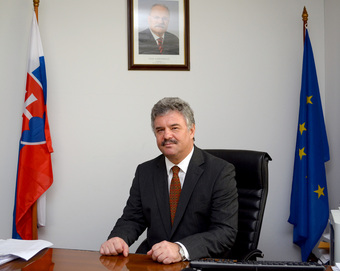
Slovak Republic at a glance
THE Slovak Republic is a small inland country in the heart of Europe. The geographical centre of Europe is in fact the St. John church in Kremnické Bane, a village in Žiar nad Hronom district in Slovakia.
Slovakia covers 49,038 square kilometers
and has a population around 5.5 million, about 86 percent of whom are ethnic Slovaks. Minority groups in the country include Czechs, Hungarians, Roma, Ruthenians and Ukrainians. The capital Bratislava has a population of a little over 420,000.
Slovakia fills the space between Poland in the north and Hungary in the south. Its western neighbors are the Czech Republic and Austria, while the Ukraine lies off its eastern border. The distance between the eastern and western extremes is about 429 kilometers. The width of the territory from the north to the south varies between 80 to 200 kilometers.
In spite of being such a small country, Slovakia boasts many diverse natural assets. Tall mountain peaks alternate with deep valleys and gorges, extensive forests, meadows and pastures.
The disintegration of Czechoslovakia – the common state of Czechs and Slovaks – led to the establishment of the independent Slovak Republic on January 1, 1993. Slovakia joined the United Nations the same year.
Slovakia is a parliamentary democracy. The head of the state is the president who serves a 5-year term. He shares his powers with the parliament, the official name of which is the National Council of the Slovak Republic. This top legislative authority of the Slovak Republic is single-chambered and has 150 members.
The Slovak Republic has been a member of NATO since 2004 and became a coequal member of the European Union in the same year. The country was included in the Shengen Area in 2007 and became the 16th member of the European monetary union, the Eurozone, in 2009.
THE Slovak Republic is a small inland country in the heart of Europe. The geographical centre of Europe is in fact the St. John church in Kremnické Bane, a village in Žiar nad Hronom district in Slovakia.
Slovakia covers 49,038 square kilometers
and has a population around 5.5 million, about 86 percent of whom are ethnic Slovaks. Minority groups in the country include Czechs, Hungarians, Roma, Ruthenians and Ukrainians. The capital Bratislava has a population of a little over 420,000.
Slovakia fills the space between Poland in the north and Hungary in the south. Its western neighbors are the Czech Republic and Austria, while the Ukraine lies off its eastern border. The distance between the eastern and western extremes is about 429 kilometers. The width of the territory from the north to the south varies between 80 to 200 kilometers.
In spite of being such a small country, Slovakia boasts many diverse natural assets. Tall mountain peaks alternate with deep valleys and gorges, extensive forests, meadows and pastures.
The disintegration of Czechoslovakia – the common state of Czechs and Slovaks – led to the establishment of the independent Slovak Republic on January 1, 1993. Slovakia joined the United Nations the same year.
Slovakia is a parliamentary democracy. The head of the state is the president who serves a 5-year term. He shares his powers with the parliament, the official name of which is the National Council of the Slovak Republic. This top legislative authority of the Slovak Republic is single-chambered and has 150 members.
The Slovak Republic has been a member of NATO since 2004 and became a coequal member of the European Union in the same year. The country was included in the Shengen Area in 2007 and became the 16th member of the European monetary union, the Eurozone, in 2009.

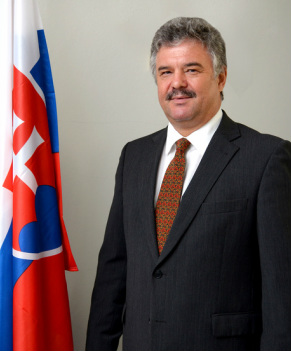
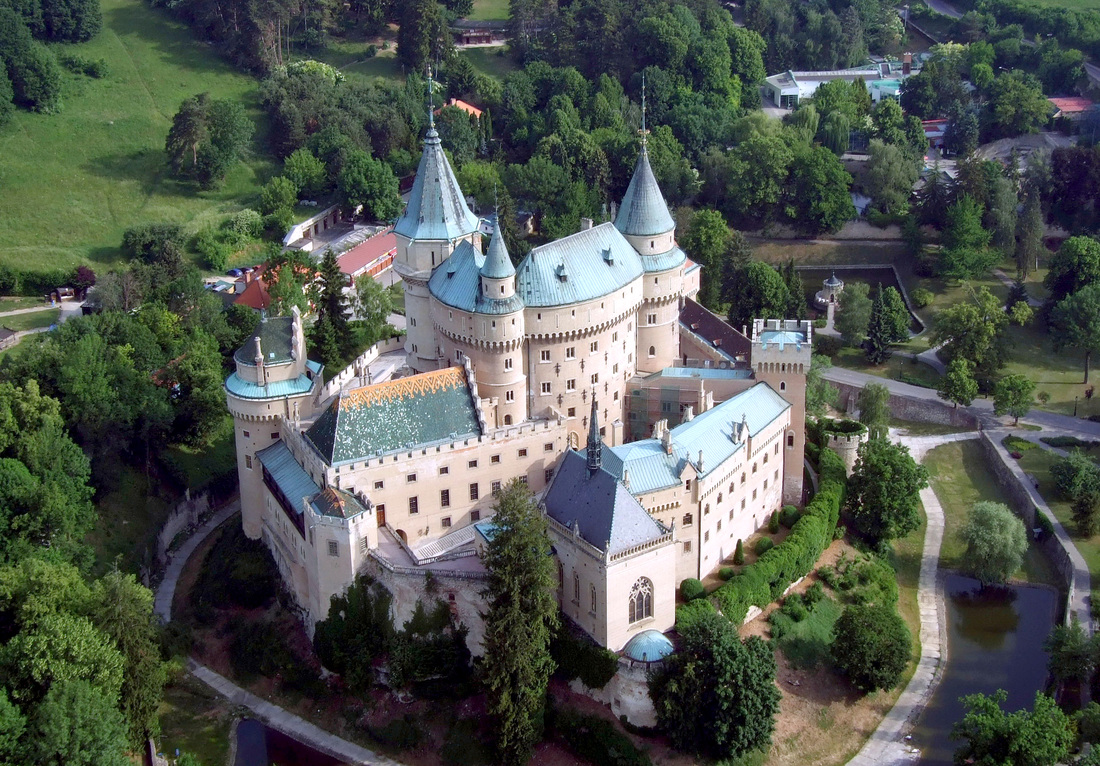
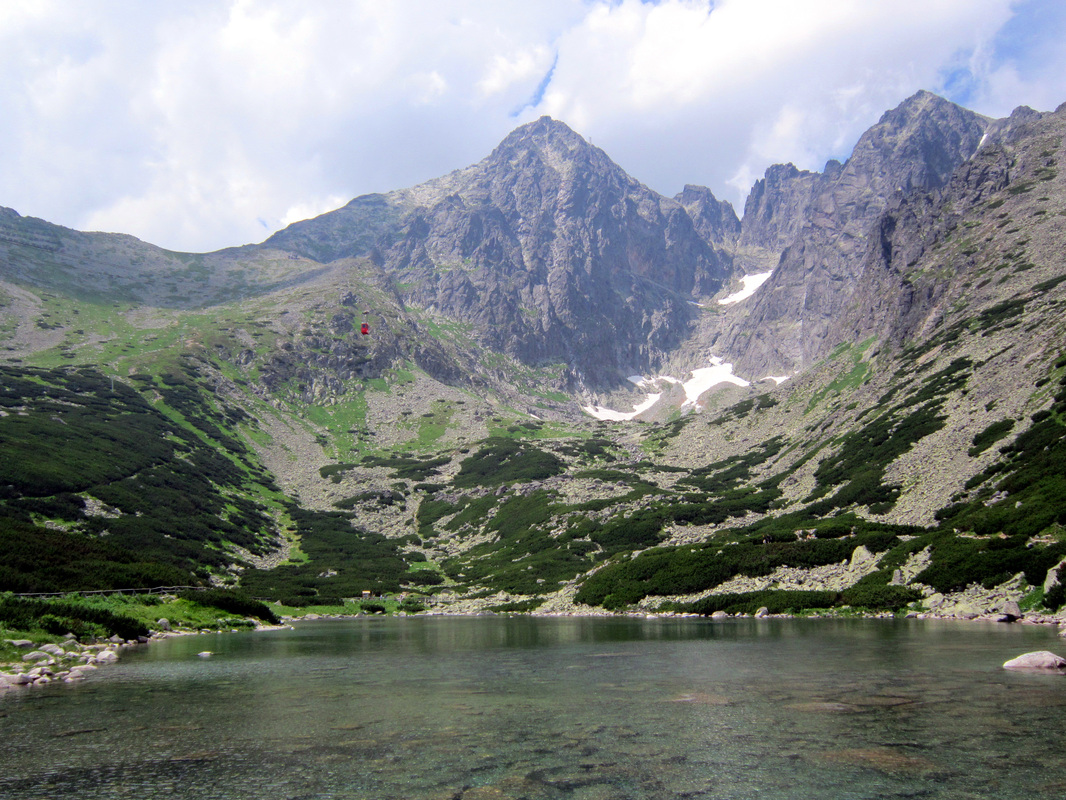
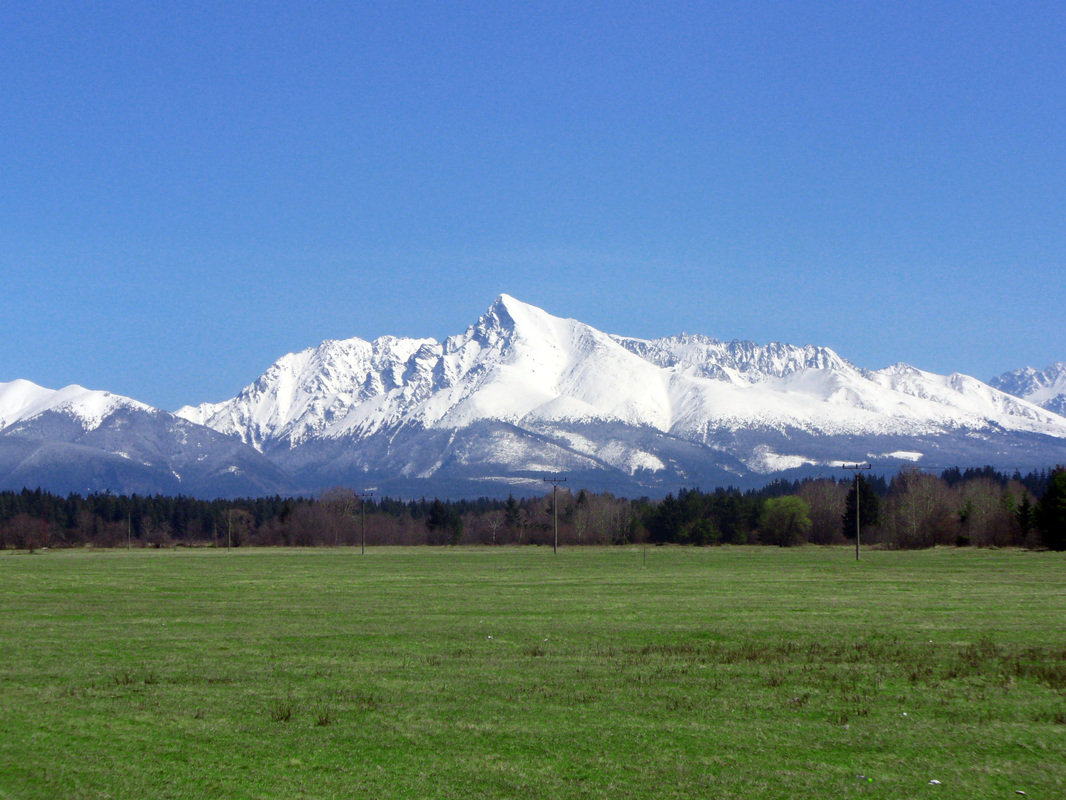
 RSS Feed
RSS Feed
